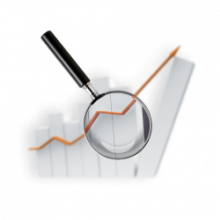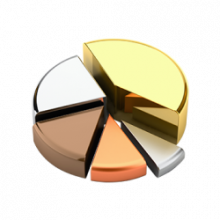Results of the risk premium assessment work
The results of the various methods computed in this 25th edition are as follows :
- The risk premium by the survey method showed a slight increase of 30 BPS, from 6.4% to 6.7% in October 2025. This evolution results from the decrease in the average yield of Treasury Bills, from 3.24% in November 2024 to 2.81% in October 2025. Furthermore, we note a relative stability in investors' required rate of return toward the Equity market, i.e. around 9.5%.
- The historical risk premium posted a decrease of -0.4 pt to 4.5% in October 2025. This level is justified by the downward readjustment of the average market’s gross return over the last 20-year period, going from 10.8% to 10.5%.
- The prospective risk premium reached 6.6% in October 2025, up 0.3 pt compared to November 2024. This result takes into account an AAGR of listed companies’ earnings growth of +10.0% over the period 2025E-2027E. For the long term horizon, the target growth rate is around +4.0% per year justified by the mature profile of large-cap tocks.
A realistic choice in favour of the "survey method"
Upon the analysis of the various results and on the basis of our own vision, we maintain our choice in favour of the survey method. We believe that this method best reflects the expectations of active investors in the Moroccan Equity market, particularly in an inflationary context marked by upward pressure on the Yield curve. Therefor, the survey method seems to be the most relevant compared to other approaches.
Historical risk premium
Methodological framework
This method is based on the following assumption: « For a future investment, investor will require a reward at least equivalent to the one historically observed on the market ». The principle of this process, on the basis of the historical data, consists of determining the average gross return of the stock market’s index and that of the sovereign bonds, i.e. the risk free. The risk premium is then deducted from the average spread between the two yields.
Computation
Based on available data, we have calculated the historical annual gross return of the MASI index (including dividend) and the Treasury Bills over a historical period of 10 years. For a coherence challenge, the period studied for this edition is 20 years. On the basis of the arithmetical average method and the annual average growth rate method (AAGR), we come up with the following results:
Historical risk premium according to the different methods
Over a 20-year period:
- MASI Index: the arithmetic average stands at 12.9%, while the average annual growth rate (AAGR) amounts to 10.5%.
- Treasury bills Morocco: the arithmetic average is 6.3%, and the AAGR stands at 6.0%.
- Risk premium: it reaches 6.5% on an arithmetic average basis and 4.5% in AAGR terms.
The arithmetic average method implies historical profitability largely above the AAGR method. This gap is mainly due to the high degree of sensitivity to extreme values of the arithmetic method. Recall that the Moroccan Equity market was characterized by extensively bullish cycles. On the other hand, the AAGR shows more modest profitability. Indeed, it allows to smooth out the extreme variations during the cycle by integrating into the calculation solely the initial and the final values.
Finally, our historical Equity Risk Premium calculated according to the AAGR method settles at 4.5% compared to 4.9% at the end of the previous edition.
Analysis and interpretation of results
We believe that the historical Equity Risk Premium is less relevant for the Moroccan market. In fact, to serve as a reliable indicator, the Equity Risk Premium must be observed over a long period, in statistical terms over a minimum of 30 years. The aim is to normalize stock market yields like in developed countries which have an array of data covering nearly an entire century. As a young financial market, the Casablanca Stock Exchange market doesn't reflect this case.
Prospective risk premium
Methodological framework
In the theory of efficient markets, an asset’s valuation level asset reflects all the information available to the market at a particular time. By projecting this assumption on the Equity market as a global entity, it is possible to consider that the market’s valuation at a given time is the translation of investor expectations toward the discounted future cash-flows of listed companies.
For this purpose, the calculation of the prospective Equity Risk Premium is based on the market’s profits outlook. Indeed, the rate level of the future earnings growth which allows to equalize the current market capitalization is equivalent to the required shareholders 'return. By deducting the cost of money over the same period, we come up with a prospective Equity Risk Premium. Recall that we consider a beta of 1.0 for the market.
Computation
Pour les valeurs cotées à la Bourse de Casablanca, nous retenons pour la période 2025E-2027E un TCAM de la masse bénéficiaire récurrente de +10,0%. Au-delà de cette date, et à horizon 2035E, nous retenons un TCAM de +4,0% qui tient compte de la maturité des grandes capitalisations dont la croissance à LT devrait surperformer légèrement celle du PIB. À l’infini, nous optons pour un niveau de croissance moyen de l’économie marocaine de 3,0%. Enfin, nous avons retenu un taux sans risque (BDT 10 ans) de 2,81% observé à la date de réalisation de cette étude. Au terme de notre analyse, la prime de risque prospective ressort à 6,6 %, en cohérence avec les paramètres présentés ci-dessous.
Over the period 2025E-2027E, we consider an average annual growth rate of +10.0% for the Moroccan Equity market. Beyond this period and by 2035E, we apply an AAGR of +4.0% which takes into account the maturity of the largest market capitalizations in the Casablanca Stock Exchange whose revenue’s growth should be aligned with the average GDP growth of the Moroccan economy over the long term horizon. Finally, a 3.0% rate has been adopted as a perpetual growth. This is coherent with the normative level applied to emerging economies. Finally, we used a risk free instruments (sovereign bonds) of 2.81% observed during our survey.
Following our analysis, the prospective Equity Risk Premium stands at 6.6%, consistent with the parameters outlined below.
Prospective Risk Premium Parameters:
- AAGR Profits 25E–27E: 10.0%
- AAGR Profits 28E–35E: 4.0%
- Infinite Growth: 3.0%
- Risk Free Rate: 2.8%
- Beta: 1.0
- Cost of Equity (Ke): 9.4%
- Equity Risk Premium: 6.6%
Analysis and interpretation of results
The results of the method remain closely linked to our main growth assumptions. This applies more particularly to the perpetual profit growth. Although the fact that we are quite comfortable compared to the short term forecasts, the long term assumptions appear to be more arbitrary than any outright scientific method. As opposed to developed markets which have reached a certain level of maturity (by posting for example normative growth rates in terms of dividend), the Moroccan market is far from this case. In fact, the short degree of hindsight of the Moroccan market doesn’t allow us to build a reliable forecast model on the long term. This reduces even more the relevance of this method for the case of Morocco.
Risk premium by survey method
Methodological framework
This approach aims to identify the annual return required by investors toward an investment superior to 5 years in the Equity market. For this purpose, a questionnaire is sent quarterly to a representative and statistically valid sample of investors.
Adjustment of method
In this edition, we have operated two methodological adjustments :
- A slight variation of weights which goes along with the current breakdown of transaction volumes on the central market by the different investor profiles. In this edition, we have revised upwards the weight of individual investors to 20%, to the detriment of the category of foreign investors, whose weight has fallen to 5% compared to 10% previously ;
- An adjustment of the required return intervals which joined the Equity market performance over the past decade. Starting from March 2016 edition, the required return intervals proposed to investors are : [10% ; 11%], [9% ; 10%], [8% ; 9%], [7% ; 8%] and [6% ; 7%].
Computation
To compute a risk premium of the Moroccan Equity market we have identified four major categories of investors : (1) Institutional/UCITS, (2) Reference Actors, (3) Individuals and (4) Foreign investors. Each category has a different weighting depending on several criteria: its intervention level, influence on the market and our own vision. The category of "Reference Actors" includes investors with a deep knowledge of the Moroccan market allowing them to evaluate faithfully a realistic risk premium. For this purpose, we have applied a weight of 20.0 % for this category.
On the basis of the survey method, the Equity Risk Premium comes to 6.7%. This method corresponds to the weighted average of risk premiums calculated for each investor category.
Analysis and interpretation of results
We believe that the survey approach appears to be the best adapted to the Moroccan market as it entails a consensus of the various actors. Moreover, it takes into account the several qualitative aspects neglected by the other methods. We note for example:
- The impact of the current regional and international political context on investors’ risk aversion;
- The investors' expectations toward the yield curve;
- A Moroccan market relatively limited in terms of diversification abroad;
- The lack of investment opportunities at the local level.




